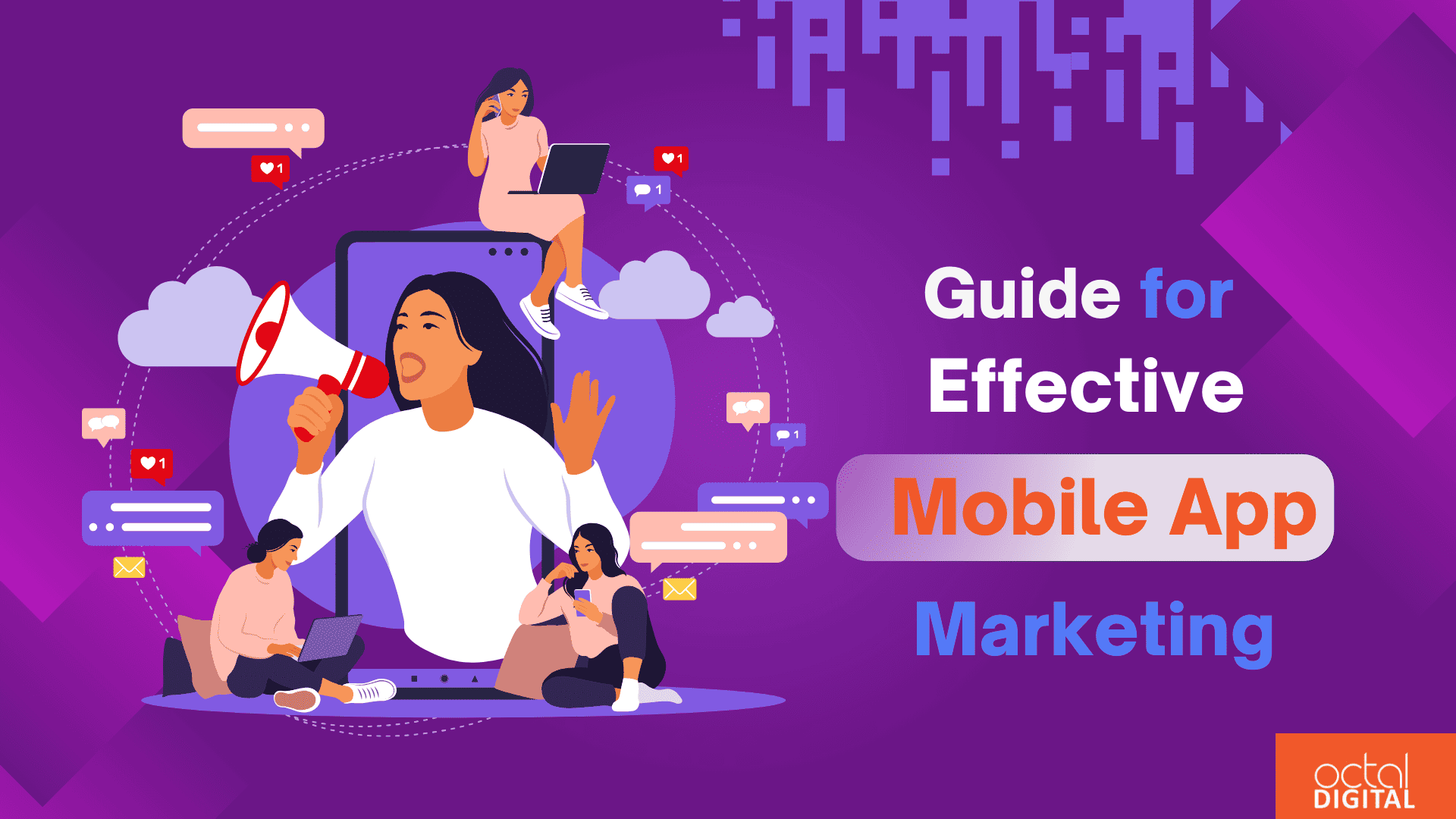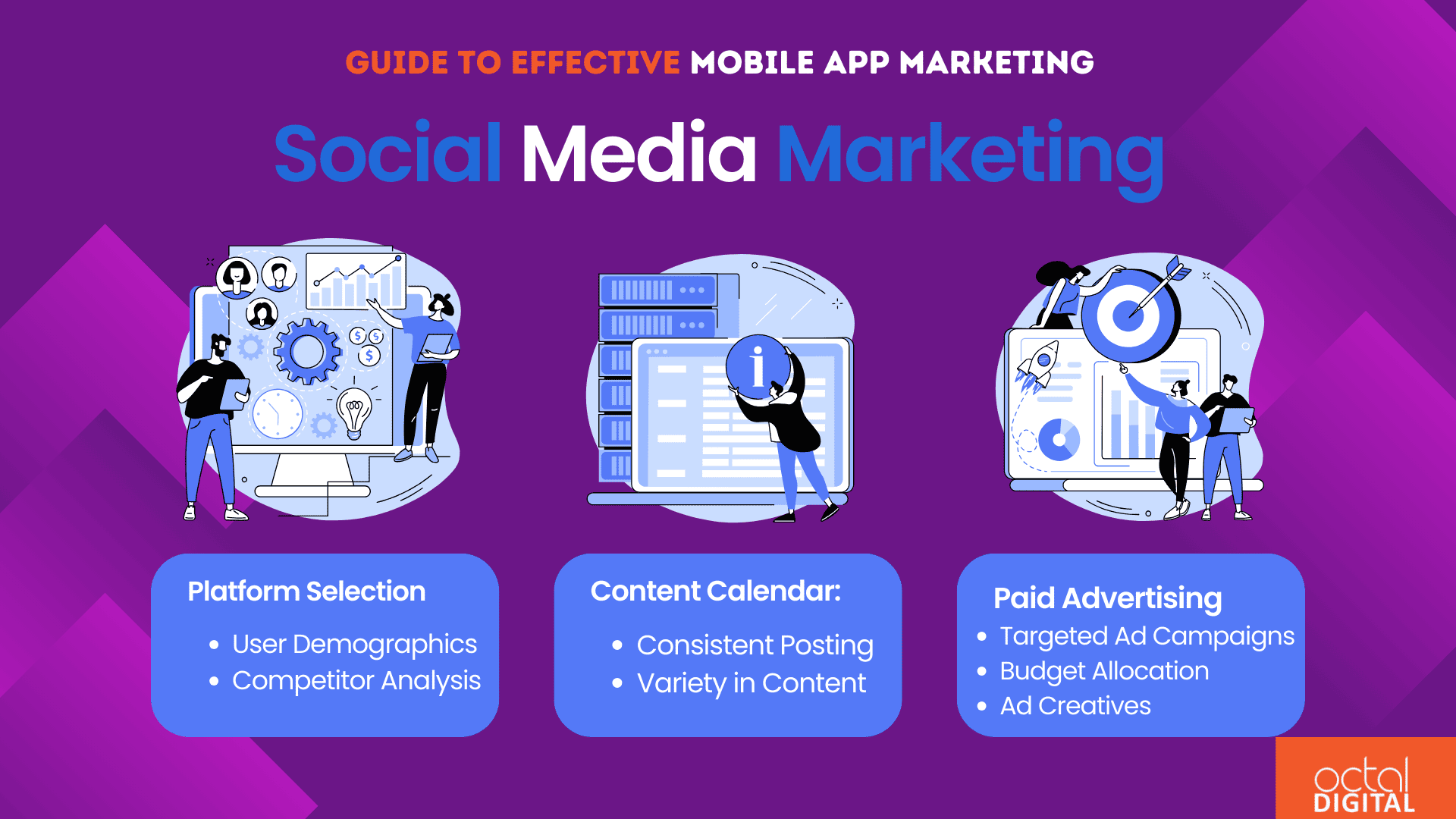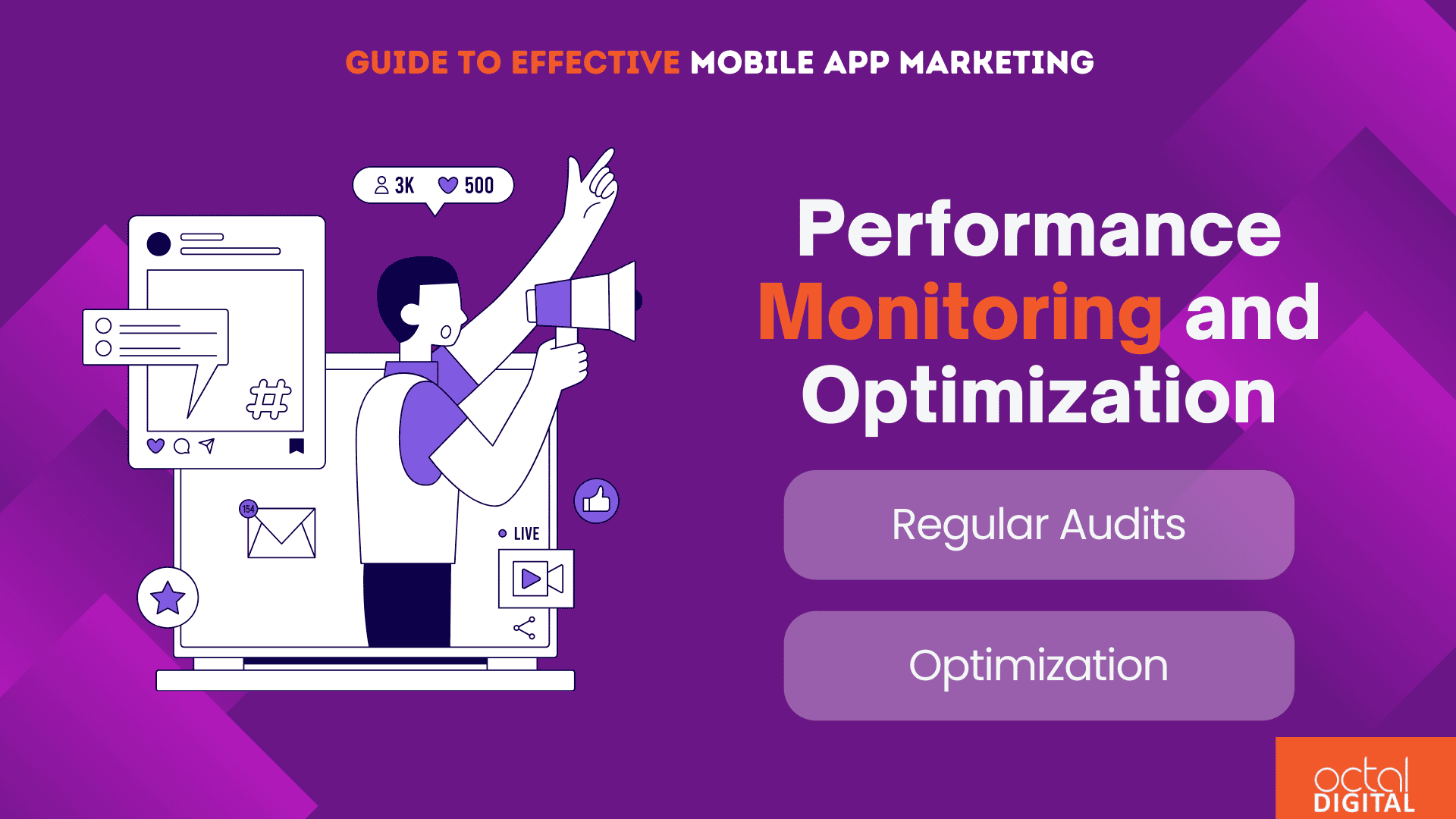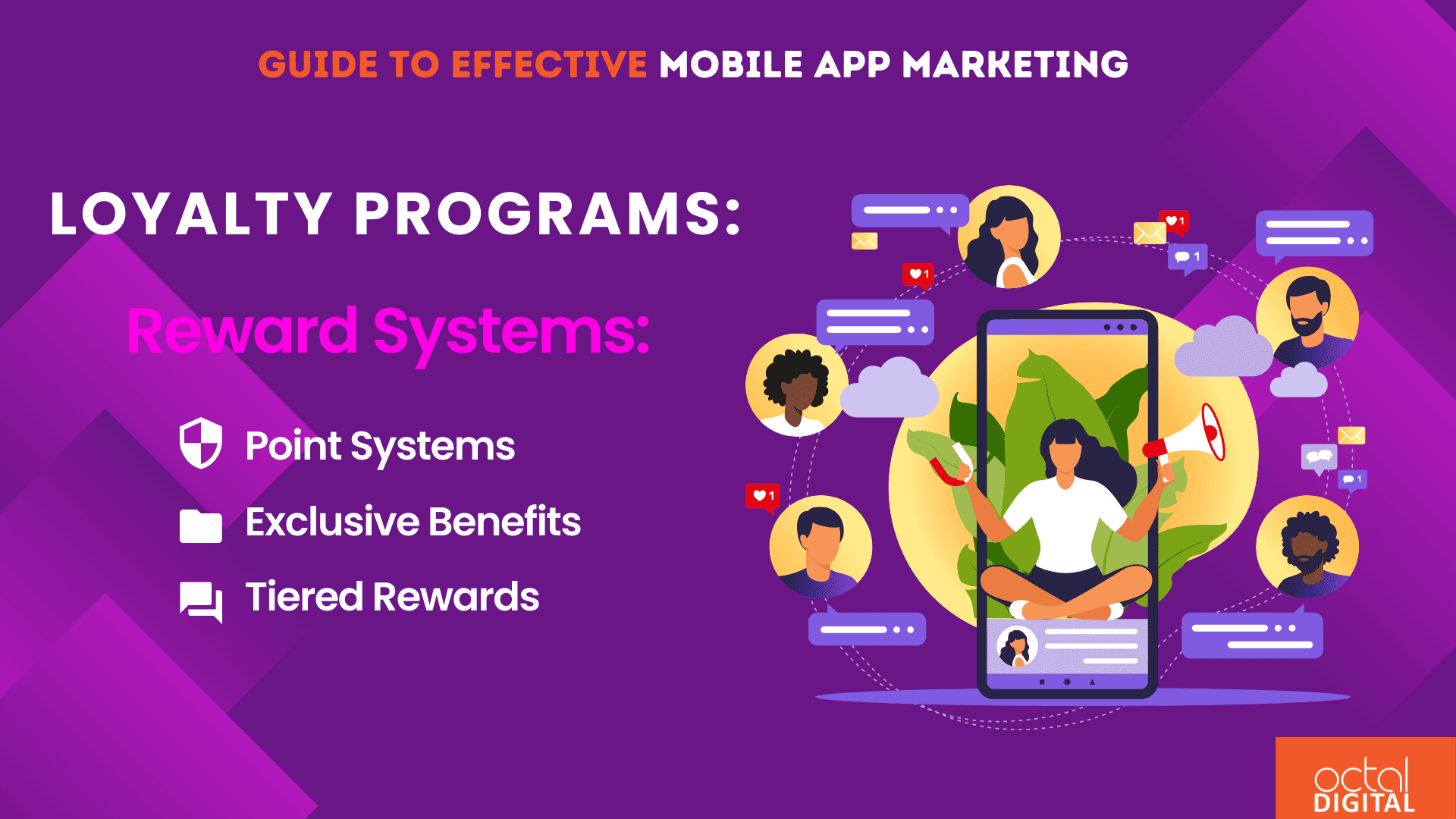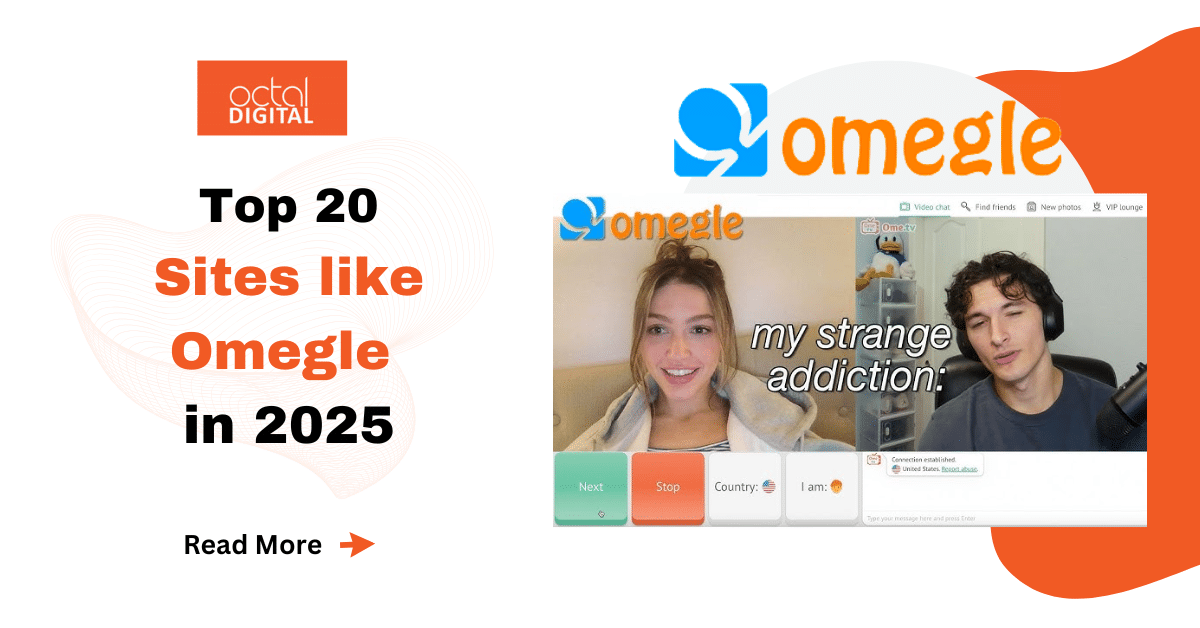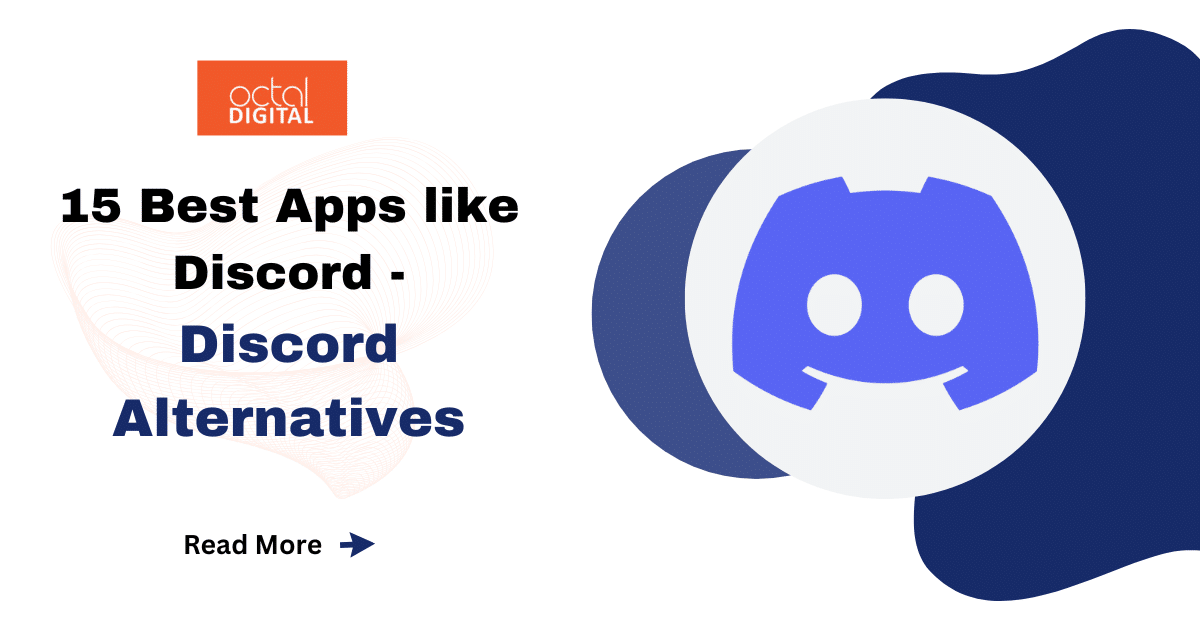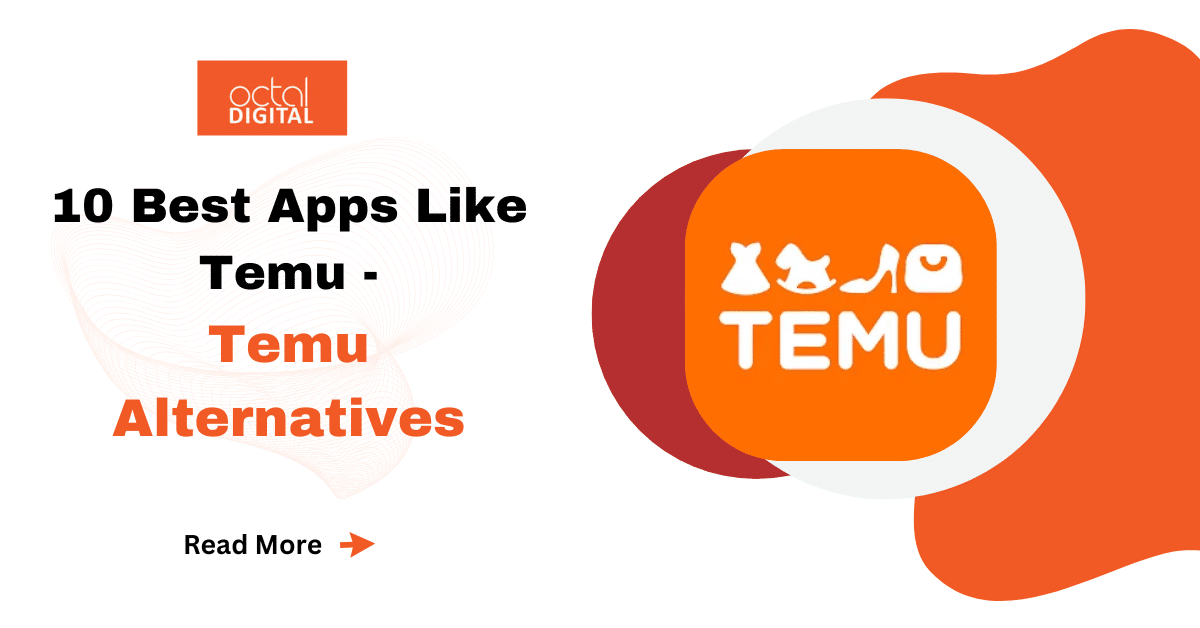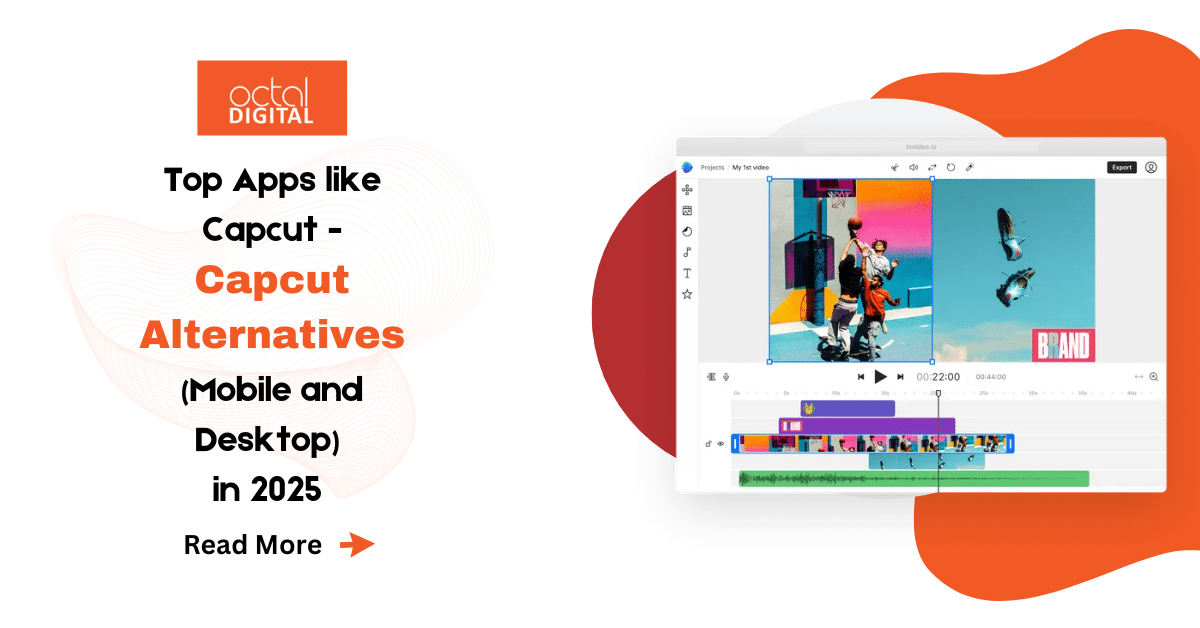Mobile app marketing demands a strategic approach in a competitive environment. This blog explores practical tactics, labeled as “Cracking the Code,” to bolster your mobile app marketing game. Navigating the complexities of this evolving ecosystem is crucial for app developers and marketers aiming to make their mark in app stores. In this guide, we’ll dive into essential aspects such as market research, app store optimization, and analytics. Whether you’re a seasoned developer or new to the scene, these strategies offer practical insights to improve visibility, increase downloads, and boost user engagement. Let’s get straight to the core of effective mobile app marketing.
Table of Contents
Toggle1. Understanding the Mobile App Ecosystem:
You need to dissect key statistics and trends that wield influence over user behavior. Recognizing the critical role of effective marketing in an intensely competitive setting lays the groundwork for constructing a robust mobile app strategy.
A) Target Audience Analysis:
-
User Segmentation:
Leverage analytics tools to segment users based on demographics such as age, location, and device preferences. This segmentation helps in tailoring marketing efforts to specific user groups.
-
Behavioral Analytics:
Utilize advanced analytics tools like Mixpanel or Amplitude to track user behavior within the app. Understand how users interact with features, identify common paths, and pinpoint potential bottlenecks.
-
Preference Mining:
Deploy surveys and feedback mechanisms within the app to directly capture user preferences. Analyze this data to align your app’s functionalities with user expectations.
B) Competitor Analysis:
-
Competitor Identification:
Utilize tools like App Annie or Sensor Tower to identify both direct and indirect competitors in your app’s niche. This aids in comprehensively understanding the competitive landscape.
-
Feature Benchmarking:
Conduct a feature-by-feature analysis of competitor apps. Identify unique selling points and areas where your app can differentiate itself.
-
SWOT Analysis:
Perform a SWOT analysis by evaluating the strengths, weaknesses, opportunities, and threats posed by competitors. This structured assessment helps in formulating a strategic marketing approach.
Read Our Latest Blog: Comprehensive Guide to Mobile App Analytics in 2024
2. App Store Optimization (ASO) for App marketing:
ASO is all about maximizing your app’s visibility within app stores. Here’s a detailed breakdown:
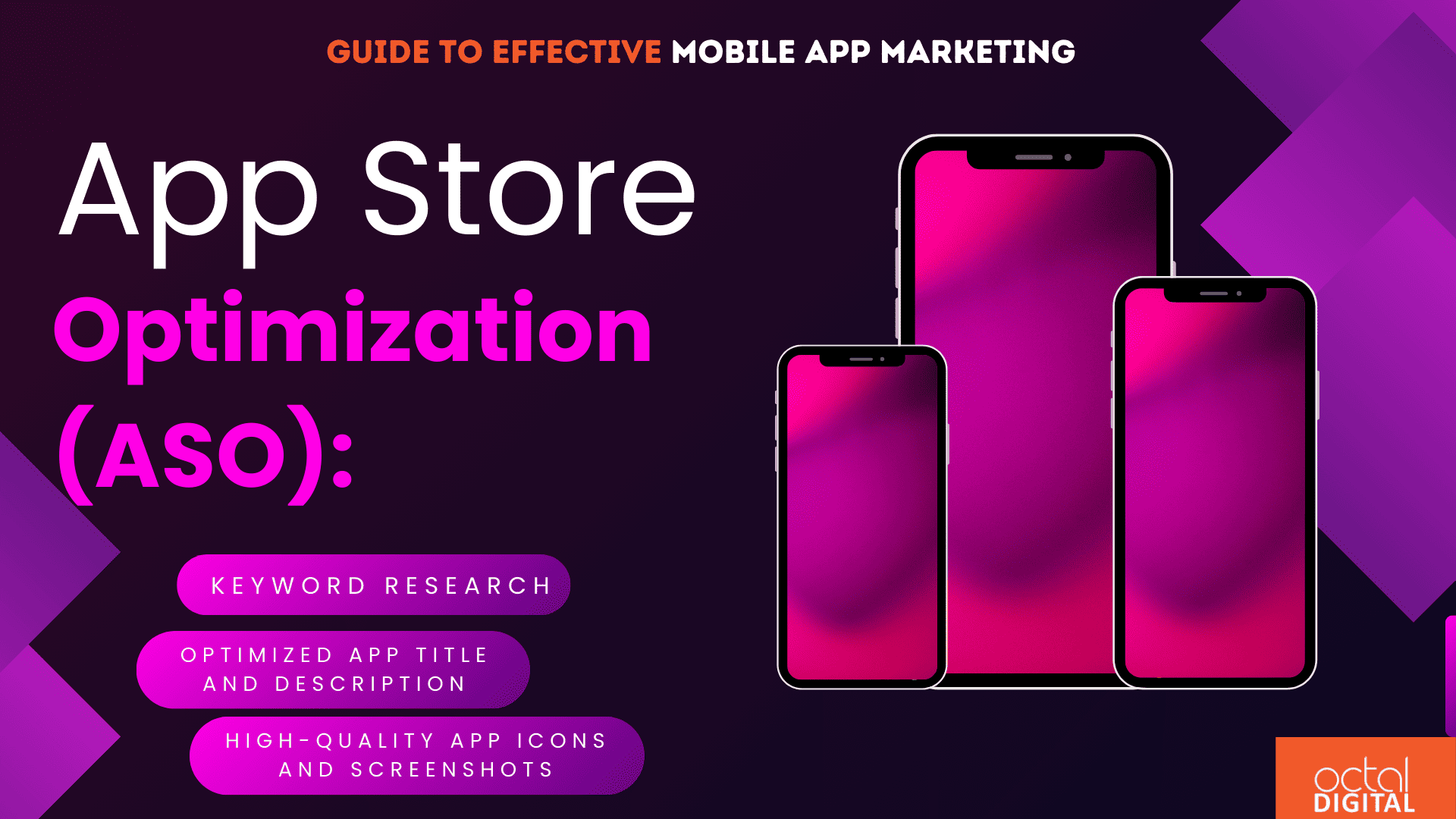
A) Keyword Research:
- Utilize Keyword Tools: Leverage tools like Google Keyword Planner or App Annie to identify relevant and high-volume keywords in your niche.
- Competitor Keyword Analysis: Analyze competitor apps to discover keywords contributing to their visibility.
- Long-Tail Keywords: Incorporate long-tail keywords to capture specific user queries.
B) Optimized App Title and Description:
- Keyword Placement: Integrate primary keywords strategically into your app title and description for algorithmic recognition.
- Clarity and Conciseness: Craft a clear, concise, and compelling app title, emphasizing its core functionality.
- Localization: Optimize app titles and descriptions for different languages and regions.
C) High-Quality App Icons and Screenshots:
- Visual Appeal: Design icons that visually represent your app’s purpose. A/B test various icons for user preference.
- Screenshot Sequencing: Organize screenshots to showcase key features and functionalities. Use captions effectively.
- Resolution and Consistency: Ensure high-resolution images and maintain visual consistency across all assets.
Implementing these ASO tactics enhances your app’s discoverability, increasing the likelihood of downloads.
3. Content Marketing:
Let’s explore how to leverage content for effective app promotion:
A) Blog Posts and Articles:
- Keyword Integration: Create blog content with strategically placed keywords related to your app. Optimize for search engine visibility.
- Educational Content: Develop articles that educate users about industry trends, issues, or solutions related to your app.
- Guest Blogging: Collaborate with influencers or industry blogs for guest posts, expanding your reach.
B) Video Content:
- App Feature Demonstrations: Create videos showcasing your app’s features in action. Provide a step-by-step guide.
- User Testimonials: Encourage satisfied users to share their experiences through video testimonials.
- Platform Diversity: Distribute videos across various platforms, including YouTube, social media, and your app’s landing page.
Implementing a content strategy aligns your app with user needs and enhances its online presence.
Recommended Read: Best Web Development Backend Frameworks in 2024
4. Social Media Marketing:
Here’s a pragmatic approach to promoting your app on social media platforms. Let’s get into the specifics:
A) Platform Selection:
- User Demographics: Identify social media platforms where your target audience is most active. Consider age groups, interests, and geographical locations.
- Competitor Analysis: Examine where your competitors are active and assess their engagement levels.
- Focus on High-Impact Platforms: Concentrate efforts on platforms that yield the most significant impact for your app.
B) Content Calendar:
- Consistent Posting: Develop a content calendar for regular and consistent posting. Plan content around app updates, industry events, or relevant trends.
- Variety in Content: Diversify content types, including images, videos, infographics, and text-based posts.
- Engagement Monitoring: Regularly monitor engagement metrics and adjust the content calendar based on performance.
C) Paid Advertising:
- Targeted Ad Campaigns: Use social media advertising features to target specific demographics. Utilize A/B testing for ad optimization.
- Budget Allocation: Allocate ad budgets based on platform performance. Focus on platforms delivering the best return on investment.
- Ad Creatives: Design visually appealing ad creatives with clear calls to action.
5. Influencer Marketing:
This section provides a straightforward guide on leveraging influencer marketing to boost your app’s visibility and credibility.
A) Identify Influencers:
- Niche Relevance: Seek influencers whose audience aligns with your app’s target users. Prioritize relevance over follower count.
- Engagement Metrics: Analyze influencers’ engagement rates, comments, and authenticity. Authenticity often trumps follower numbers.
- Micro-Influencers: Consider collaborating with micro-influencers for more genuine connections with their audience.
B) Campaign Development:
- Clear Objectives: Define clear objectives for the influencer campaign, whether it’s app downloads, user engagement, or brand awareness.
- Compelling Briefs: Provide influencers with comprehensive briefs, emphasizing key app features and unique selling points.
- Performance Metrics: Establish metrics to measure campaign success, such as clicks, installs, or in-app actions.
Leveraging influencers strategically can significantly expand your app’s reach and credibility within your target audience.
Looking for a mobile app marketing agency to help your business reach its right audience? We have 13+ years of domain expertise in mobile app marketing. Octal Digital, as a leading app marketing agency, excels in conducting in-depth market research, providing extensive app audits, and tailoring personalized strategies across diverse industries. With a specialized focus on App Store Optimization (ASO), multi-channel marketing, and leveraging advanced performance analytics, we ensure heightened visibility and engagement for clients’ apps.
6. Email Marketing:
Email marketing is a potent tool for maintaining a direct line of communication with your user base. In this section, we’ll delve into pragmatic steps to leverage email campaigns effectively for app promotion.
A) Build a Subscriber List:
Start by strategically integrating email capture mechanisms within your app and website. Consider leveraging in-app prompts, sign-up forms, or exclusive promotions to encourage users to subscribe. Building a robust subscriber list provides the foundation for targeted and personalized communication.
B) Campaigns and Newsletters:
Craft impactful email campaigns by showcasing key app features, updates, and exclusive promotions. Tailor content based on user preferences and behaviors through strategic segmentation. Regular newsletters, aligned with app updates and industry events, maintain a consistent touchpoint for informed and engaged users.
C) Personalization and Automation:
Enhance your email marketing strategy with personalization and automation. Tailor content to user preferences, interactions, and in-app behaviors for a more engaging experience. Implement automation tools to streamline campaign elements, including scheduling follow-up sequences, dynamic user segmentation, and triggered emails based on user actions. This approach not only saves time but also ensures timely and relevant communication, contributing to a seamless user experience.
7. App Analytics and Tracking for App Marketing:
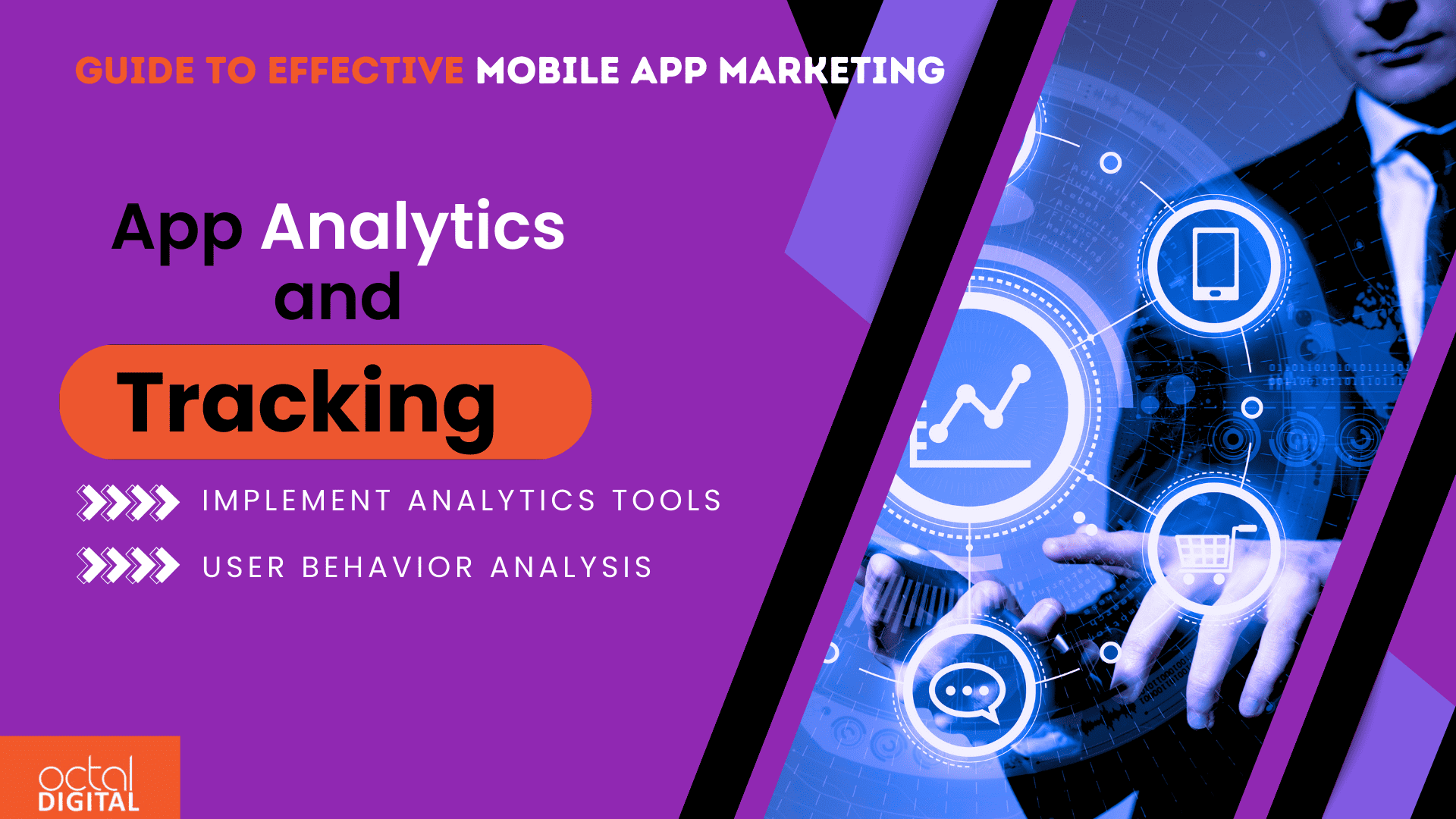
A) Implement Analytics Tools:
Choose analytics tools meticulously based on your app’s requirements. Opt for well-established solutions like Google Analytics or Firebase Analytics, or tailor a custom solution to suit specific needs. Ensure precise implementation to capture accurate and relevant data, allowing a deep dive into user behavior.
B) User Behavior Analysis:
Leverage analytics to track granular user interactions within the app. Identify and map user journeys, pinpointing popular features, and uncovering potential pain points. Conduct a detailed analysis of drop-off points to optimize the overall user experience.
8. User Reviews and Feedback:
This section focuses on leveraging user reviews and feedback as valuable sources of insights and opportunities for app enhancement.
A) Encourage Reviews:
- Strategic Review Prompts: Implement strategic in-app prompts encouraging users to leave reviews at optimal times, such as after a successful interaction or feature usage.
- Incentivization: Consider incentivizing users to leave reviews, whether through exclusive content, features, or discounts.
- Review Response Management: Establish a systematic approach for responding to user reviews promptly, addressing concerns, and expressing gratitude for positive feedback.
B) Address Negative Feedback:
- Issue Identification: Use sentiment analysis tools to identify and categorize negative feedback. Pinpoint recurring issues to prioritize fixes or updates.
- Transparent Communication: Respond transparently to negative reviews, acknowledging concerns, and outlining steps taken or planned for resolution.
- Iterative Improvement: Treat negative feedback as an iterative improvement opportunity. Implement updates based on user suggestions to demonstrate responsiveness.
Effectively harnessing user reviews and feedback provides a continuous feedback loop for refining your app and maintaining user satisfaction.
Our mobile app marketing agency goes beyond conventional practices. Octal Digital stands out as a premier app marketing agency, specializing in in-depth market research, comprehensive app audits, and tailor-made strategies for diverse industries. fostering strategic partnerships, and maintaining transparent communication, establishing itself as a trustworthy and knowledgeable partner. Partner with us today to make your app reach to new horizons and unlock its full potential with our expert marketing strategies!
9. Referral Programs:
Referral Programs (if implemented strategically) can organically amplify your app’s user base.
A) Reward Structure:
- Clear Tiers: Define distinct tiers within the reward structure, each offering escalating benefits. For example, higher tiers could unlock more exclusive features or greater discounts.
- Gradual Escalation: Create a gradual escalation in rewards to encourage sustained participation and engagement from both referrers and new users.
- Exclusive Perks: Introduce exclusive perks for top referrers, fostering healthy competition and a sense of achievement.
B) User-Friendly Referral Mechanism:
- Intuitive Interface: Ensure the referral process is intuitive and easily navigable. A seamless interface encourages users to actively participate.
- One-Click Sharing: Implement one-click sharing options for popular social media platforms, making it effortless for users to spread the word.
- Customizable Messages: Allow users to personalize their referral messages, increasing the likelihood of friends and contacts engaging with the shared content.
C) Tracking and Attribution:
- Unique Referral Links: Assign unique referral links to individual users for accurate tracking. This ensures precise attribution and eliminates confusion.
- Device-Agnostic Tracking: Implement cross-device tracking mechanisms to capture referrals from various platforms and devices accurately.
- Real-time Analytics: Provide real-time analytics to users, allowing them to track the progress of their referrals and earned rewards.
A successful referral program goes beyond mere incentives; it incorporates a seamless user experience, clear progression paths, and robust tracking mechanisms.
10. Performance Monitoring and Optimization:
A) Regular Audits:
- KPI Assessment: Regularly assess key performance indicators (KPIs) aligned with your marketing goals. This includes user acquisition, retention rates, and conversion metrics.
- Budget Allocation Review: Conduct periodic reviews of your marketing budget allocation, adjusting based on the performance of various channels and campaigns.
B) Optimization:
- A/B Testing: Implement A/B testing for various elements like ad creatives, messaging, and user flows. Analyze results to refine and optimize marketing strategies.
- Conversion Funnel Analysis: Dive deep into the conversion funnel, identifying friction points and optimizing user journeys for enhanced conversion rates.
- Adaptation to Trends: Stay agile and adapt marketing strategies based on emerging industry trends, user behaviors, and platform updates.
Regular performance audits and optimization efforts ensure the ongoing effectiveness of your mobile app marketing.
We emerge as a leading app development agency and offer innovative and scalable mobile app development services. With a commitment to excellence, Octal Digital combines cutting-edge technologies and a client-centric approach to deliver bespoke app solutions tailored to diverse industry needs. The agency excels in the complete app development lifecycle, from conceptualization and design to development, testing, and deployment. Embracing the latest frameworks and methodologies, we ensure that clients receive high-performance, user-friendly, and visually appealing apps that stand out in the competitive digital landscape.
11. Community Building:
A) Create Online Communities:
- Platform Selection: Choose platforms conducive to community building, such as forums, social media groups, or dedicated app communities.
- Moderation and Engagement: Implement effective moderation to ensure a positive environment. Actively engage with community members, responding to queries, feedback, and fostering discussions.
- Exclusive Content Sharing: Provide exclusive content, updates, or features within the community to incentivize user participation.
B) Engagement:
- Discussion Forums: Establish discussion forums for users to share experiences, tips, and feedback. Encourage active participation through polls, Q&A sessions, and user-generated content.
- Feedback Channels: Create dedicated channels for users to provide feedback and suggestions. Acknowledge and consider user input in future updates.
Building a robust online community enhances user engagement, and loyalty, and provides a platform for users to connect with each other, fostering a sense of belonging around your app.
12. Partnerships and Collaborations:
A) Identify Potential Partners:
- Alignment with App Niche: Seek partners whose products or services align with your app’s niche or complement its functionalities.
- Audience Relevance: Ensure potential partners have an audience that overlaps with your target demographic.
- Industry Research: Conduct thorough research to identify businesses or influencers with a positive reputation and shared values.
B) Cross-Promotions:
- Joint Campaigns: Collaborate on joint marketing campaigns, leveraging each other’s audiences for mutual benefit.
- Co-Branded Content: Develop co-branded content, such as blog posts, videos, or social media posts, to maximize visibility.
- Exclusive Offers: Consider offering exclusive discounts or benefits to the audiences of both partners, driving cross-promotional engagement.
Octal Digital, a premier mobile game development in Houston, blends creativity with advanced frameworks, to develop captivating and market-ready gaming experiences. We offer state-of-the-art mobile game development solutions. Transform your gaming vision into reality with their digital services, and stand out in the competitive world of game development.
13. Loyalty Programs:
Implementation of loyalty programs to cultivate and reward a dedicated user base is also a strong point for mobile app marketing. Let’s see how you can utilize it:
A) Reward Systems:
- Tiered Rewards: Develop a tiered loyalty program with escalating rewards based on user engagement or in-app activities.
- Exclusive Benefits: Offer exclusive benefits to loyal users, such as early access to features, personalized content, or premium support.
- Point Systems: Implement a point-based system where users accumulate points for various interactions, which can be redeemed for rewards.
B) Implementation Guidelines:
Implementing a successful loyalty program requires careful planning and execution. Here’s a detailed guide:
C) Program Structure:
- Define Tiers: Clearly define and communicate different tiers within the loyalty program. Each tier should offer progressively valuable rewards.
- Engagement Metrics: Base tier advancement on specific engagement metrics, ensuring a fair and transparent progression system.
D) Exclusive Benefits:
- Early Access: Provide loyal users with exclusive early access to new features, updates, or beta versions, creating a sense of privilege.
- Personalized Content: Tailor content recommendations, notifications, or in-app experiences based on individual user preferences and behaviors.
- Premium Support: Offer dedicated customer support channels for loyal users, ensuring prompt assistance and issue resolution.
E) Point Systems:
- Earn Mechanisms: Clearly define how users can earn points, whether through app usage, referrals, in-app purchases, or other interactions.
- Redemption Options: Create a diverse catalog of rewards that users can redeem using accumulated points. Ensure that rewards align with user interests.
- Point Transparency: Keep users informed about their point status, providing real-time updates on points earned and redeemed.
Conclusion:
Effective mobile app marketing demands a well-executed strategy covering user acquisition, engagement, and retention. This guide serves as a clear roadmap from understanding the app ecosystem to practical implementations.
Strategically leverage app store optimization, content marketing, social media, and email campaigns for enhanced visibility and user growth. Loyalty programs, referrals, and community building are key for user retention.
Continuous improvement, performance monitoring, and legal compliance are vital. Regularly evaluate KPIs, iterate based on user feedback, and ensure legal adherence for user trust.Adapt to emerging trends with a user-centric approach. Success in the dynamic world of mobile marketing comes from continuous improvement and user satisfaction.
FAQs
1. Why is understanding the mobile app ecosystem crucial for a successful mobile app marketing strategy?
Understanding the mobile app ecosystem is vital for crafting a strategic marketing approach, navigating competition, identifying trends, and tailoring strategies to meet user expectations. It forms the basis for building a robust mobile app strategy to improve visibility, increase downloads, and boost user engagement.
2. How does app store optimization (ASO) for mobile app marketing contribute to increased app visibility?
App store optimization (ASO) maximizes app visibility by conducting keyword research, optimizing titles and descriptions, and creating high-quality visuals. These tactics enhance discoverability, increasing the likelihood of appearing in relevant searches and driving more downloads.
3. Why is building an online community important for app marketing?
Building an online community fosters user engagement, loyalty, and a sense of belonging. Platforms like forums and social media groups provide spaces for users to share experiences and feedback, enhancing satisfaction and providing valuable insights for future improvements.
4. How can app developers effectively leverage influencer marketing?
Influencer marketing amplifies app visibility and credibility. Identifying relevant influencers, prioritizing niche relevance, and collaborating for campaigns aligned with clear objectives can strategically expand the app’s reach. Micro-influencers, in particular, provide genuine connections with their audience, contributing to an authentic promotion.
